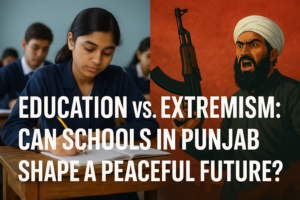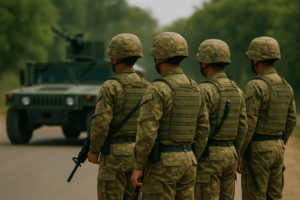1. Introduction
Higher education is a tertiary education leading to award of an academic degree. Pakistan has a diverse higher education system that includes universities, colleges, and other institutions offering undergraduate and graduate degrees in various fields of study. It includes not only universities and colleges but also various vocational schools that provide preparation in fields such as medicine, theology, business, law, music and art. Annually, on average, 480,000 students graduated from universities across the Pakistan out of which only 172,000 graduates were able to acquire jobs. This is undoubtedly one of the major concerns of Pakistani students as most of them struggles with the issues of unemployment. This is due to the some of the issues in our education system. Before diving down into ills and remedies, have a brief introduction about types of education and higher education setup in Pakistan.
2. Types of Education
- Formal education: Refers to structured and organized learning that takes place in an institutional setting, typically delivered by trained educators and follows a predetermined curriculum, leading to recognized credentials such as diplomas, degrees, or certifications.
- Informal education: Refers to learning that occurs outside of formal institutional settings, often through experiential, self-directed, or incidental learning processes, and is not typically structured or recognized by traditional credentials.
3. An Overview of Higher Education Setup in Pakistan
- Statutory position: Refers to the legally defined roles, responsibilities, and authority assigned to educational institutions, organizations, or individuals by relevant laws, regulations, and policies, which dictate their official status and functions in the education system.
- Administrative system: Refers to the organizational structure, processes, and procedures put in place to manage and oversee the operation, management, and coordination of educational institutions and programs, including decision-making, resource allocation, and policy implementation.
- Institutes: Refers to an organization or establishment that provides specialized instruction, training, or research in a particular field of study, often leading to certifications, diplomas, degrees, or other credentials.
4. Ills Predominant in Higher Education System of Pakistan
Following are some of the ills predominant in higher education system of Pakistan:
- Curriculum-related Ills
- Curriculum not in consonance with domestic needs
- Presence of mistakes and errors
- More focus on mere theories
- Uninteresting and monotonous descriptions
- Lack of analytical approach
- No focus on character-building
- Examination-related Ills
- No testing of analytical skills
- Inconsistent style of grading
- Use of unfair means in examination halls
- Infrastructure-related Ills
- Lack of institutes
- Overcharging by private-sector institutions
- Missing necessary facilities
- Human Resource-related Ills
- Lack of skills and expertise
- Lack of motivation in members of faculty
- Meager strength of faculties
- Meager strength of support staff
- High dropout ratio at elementary level
- Teaching Methodology-related Ills
- No focus on conceptual study
- Promotion and encouragement of cramming
- Monotonous style of teaching
5. Factors Responsible for the Presence of Ills
- Budgetary constraints: Pakistan’s education sector has historically received low budget and investment, with inadequate funding allocated for higher education. Limited financial resources have resulted in insufficient infrastructure, outdated facilities, and a lack of resources for research and innovation, all of which have contributed to the challenges faced by higher education institutions.
- Commercialization of education: The lack of commercialization of education has limited the access to quality education, compromised academic standards, and a narrow focus on market-driven programs.
- Outdated Curricula and Teaching Methods: The curricula and teaching methods in higher education institutions in Pakistan are often criticized for being outdated, theoretical, and lacking in practical relevance. This mismatch between the curriculum and the changing needs of the job market has led to a gap in skills development and employability of graduates.
- Myopic vision of the policymakers: The myopic vision of policymakers has resulted in inadequate long-term planning, limited investment in infrastructure and resources, and a narrow focus on immediate economic returns, contributing to the ills of the education system.
- Poor growth of economy: The poor growth of the economy in Pakistan can be attributed, in part, to the negative impacts of commercialization of higher education, such as limited access to quality education, compromised academic standards, and a narrow focus on market-driven programs.
- Shortage of Qualified Faculty: Many institutions of higher education in Pakistan face a shortage of qualified and experienced faculty. This can result in overcrowded classrooms, limited opportunities for research and innovation, and compromised quality of teaching and mentoring, which in turn affects the overall quality of higher education.
- Persistently-rampant corruption: Corruption in education sector refers to the pervasive and persistent occurrence of unethical practices, such as bribery, cheating, nepotism, and other forms of corruption, that undermine the integrity and quality of the education system in Pakistan, leading to negative impacts on the overall higher education landscape.
- Limited Research and Innovation Culture: The culture of research and innovation in higher education institutions in Pakistan is relatively weak, with limited investment in research infrastructure, funding, and collaborative opportunities with industry. This results in low research output, limited innovation, and a lack of cutting-edge knowledge creation and dissemination.
- Governance and Management: Weak governance and management structures in higher education institutions, including lack of autonomy, corruption, and nepotism, have resulted in mismanagement, inefficiencies, and politicization of higher education in Pakistan. This has hampered the overall effectiveness and performance of higher education institutions.
6. Impacts of Flawed Higher Education System
- Scarcity of talent and skills
- Increasing unemployment and underemployment
- Withering impacts on various sectors of economy
- Social degradation
- Deteriorated image of the state
- Increase in lawlessness and crime
7. Recommendations for the removal of Ills of the Higher Education Sector
- Devising meticulously-planned, sharply-focused, and thoroughly-integrated policies
- Tapping of indigenous mineral, geographical and human resources to enhance the availability of funds
- Mature, responsible and objective role of media for the upgrade of moral standards of the society
- Adequately funding higher education institutions, providing modern infrastructure, state-of-the-art laboratories, libraries, and technology resources
- Providing professional development opportunities for faculty, including training, research methodologies, and modern teaching techniques
- Promoting an entrepreneurial mind-set among students and faculty, and fostering innovation & creativity
- Allocating sensible budget to bring innovation in higher education
- Enhancing the leadership and management capacity of higher education institutions
- Introduction of civil service reforms to enhance the bureaucratic structure
- Focus on skills development of education-related human resource
- Strictly monitor the regulatory mechanism to curb the commercialization of education
- For maximum utilization of available resources, devise proper pragmatic policies
- Annual revision and upgrade of curriculum
- Utilize such technology that improve the examination standards
- Improve perks to attract best brains for education sector
8. Conclusion
Overall, addressing these challenges and implementing remedies to improve higher education in Pakistan would require a multi-pronged approach involving government policies, institutional reforms, stakeholder collaboration, and a commitment to excellence and innovation.
Read Also: Media the King Maker
📍 English Language Educator | Blogger & Content Strategist | 7+ Years in Educational Blogging
Nosheen Bashir is a dedicated English teacher and experienced blogger with over seven years of expertise in content creation and educational writing. Passionate about language, literature, and effective communication, she combines her teaching experience with blogging skills to create insightful, research-backed content that helps learners and educators alike.
🔹 Expertise & Achievements:
✔ English Language Education: A skilled educator with years of experience in teaching English grammar, literature, and communication skills to students of varying levels.
✔ Educational Blogging: Running a successful blog for 7+ years, delivering well-structured, engaging content on language learning, writing techniques, and academic success.
✔ SEO & Content Strategy: Specializes in creating high-ranking, authoritative articles that follow Google’s EEAT principles, ensuring content that is both informative and search-friendly.
✔ Student-Centric Approach: Committed to making English easier, engaging, and accessible, helping readers and students improve their language proficiency.
🚀 With a passion for teaching and writing, Nosheen Bashir is dedicated to crafting educational content that empowers students, teachers, and language enthusiasts worldwide.









